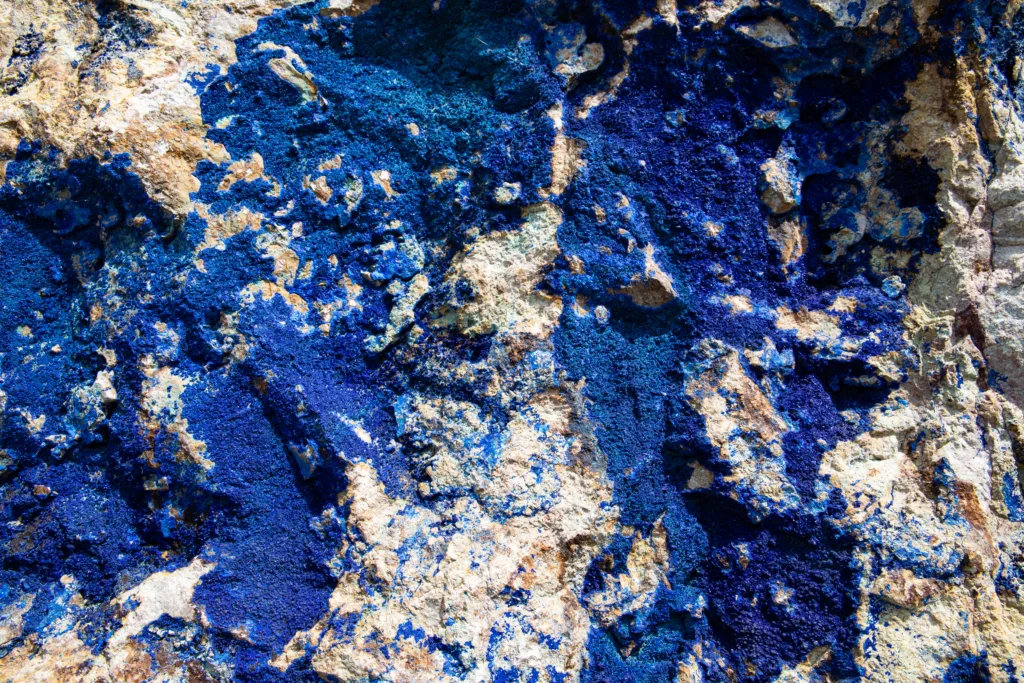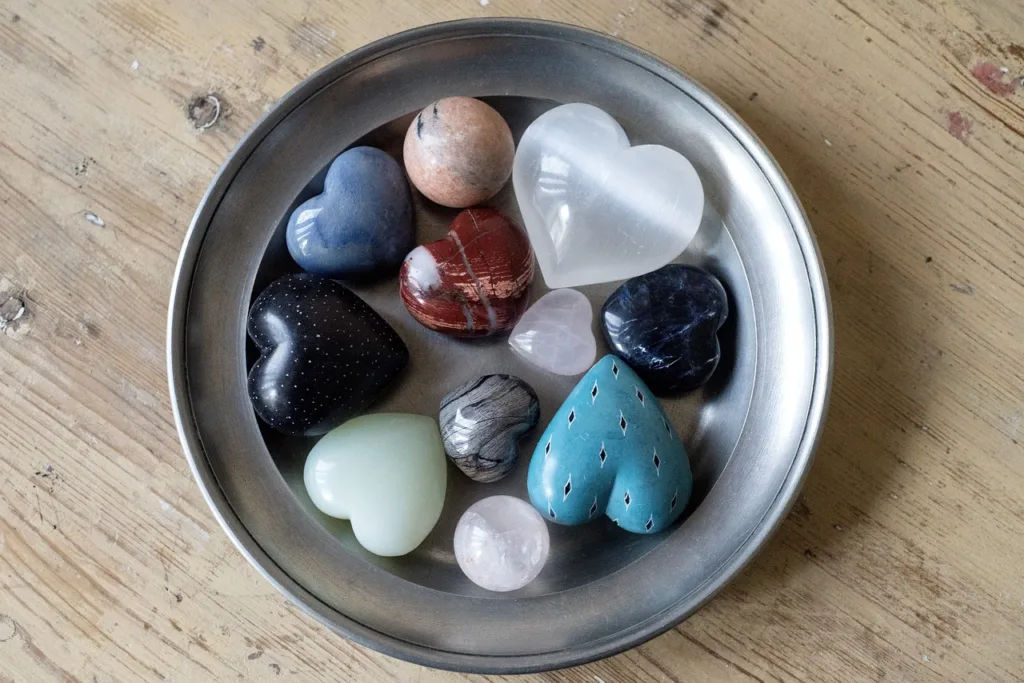Lapis lazuli and sodalite are two blue stones that are often confused with each other. While they share some similarities, they also have distinct differences that set them apart. In this article, we will explore the characteristics of lapis lazuli and sodalite, and how they differ from each other.
Lapis lazuli is a metamorphic rock that has been prized for its deep blue color for thousands of years. It is composed of several minerals, including hauynite, lazurite, noselite, and sodalite, which have grown together with white calcite and pyrite. This combination gives lapis lazuli its characteristic dark-blue color with flecks of gold. It is a relatively soft stone, with a Mohs hardness of 5 to 6.
Sodalite, on the other hand, is a blue mineral that is often mistaken for lapis lazuli. It is a member of the feldspathoid group of minerals, and is composed of sodium, aluminum, silicon, and chlorine. Sodalite is usually a deep blue color, but it can also be gray, green, or even colorless. It is a harder stone than lapis lazuli, with a Mohs hardness of 5.5 to 6.
One of the main differences between lapis lazuli and sodalite is their composition. While lapis lazuli is made up of several different minerals, sodalite is made up of just one mineral. This gives sodalite a more uniform appearance than lapis lazuli. Additionally, lapis lazuli is often flecked with gold-colored pyrite, while sodalite does not contain any pyrite.
Another difference between the two stones is their metaphysical properties. Lapis lazuli is believed to be a stone of communication, helping to enhance self-expression and creativity. It is also thought to promote harmony in relationships and bring inner peace. Sodalite, on the other hand, is said to promote logic and rationality, helping to induce clarity and comprehension. It is also believed to have a grounding effect that can stabilize mood swings and promote a deep meditative state.
In terms of practical uses, lapis lazuli has been used as a gemstone, sculpting material, pigment, and ornamental material for thousands of years. It was highly valued in ancient Egypt, where it was used to make jewelry and other decorative objects, and it is still used today in jewelry and other decorative items. Sodalite is also used for decorative purposes, but it is often used in carvings and sculptures because of its uniform color and hardness.
Lapis lazuli and sodalite are two blue stones that share some similarities, but also have distinct differences. Lapis lazuli is a metamorphic rock made up of several different minerals, while sodalite is a single mineral. Lapis lazuli often contais pyrite, while sodalite does not. Additionally, the two stones have different metaphysical properties and practical uses. Whether you prefer lapis lazuli or sodalite, both stones are beautiful and have unique qualities that make them worth exploring.
Does Lapis Lazuli Contain Sodalite?
Lapis lazuli does contain sodalite. Along with hauynite, lazurite, and noselite, sodalite is one of the minerals that make up lapis lazuli. These minerals have grown together to form the dark-blue, opaque stone that is highly valued for its beauty. In addition to these minerals, lapis lazuli also contains white calcite and pyrite. So, the presence of sodalite is one of the distinguishing features of lapis lazuli.

Is There A Difference Between Lapis And Lapis Lazuli?
There is a difference between lapis and lapis lazuli. Lapis is a general term that refers to any rock containing blue minerals, while lapis lazuli specifically refers to a blue metamorphic rock composed mainly of lazurite, a mineral that gives it its distinctive blue color. Lapis lazuli also often contains other minerals, such as pyrite, calcite, and sodalite, which can affect its appearance and quality. Therefore, while lapis is a broad term that can refer to a variety of blue rocks, lapis lazuli is a specific type of blue rock with its own unique properties.
Does Sodalite Have Gold Flecks?
Sodalite does not have gold flecks. While it may resemble Lapis lazuli in appearance, sodalite is harder and lacks the characteristic golden iron Pyrite flecks that are often present in Lapis lazuli.
What Does Sodalite Do For Healing?
Sodalite is a crystal that has been used for centuries for its healing properties. It is known to promote emotional balance, calmness, and mental clarity. In terms of physical healing, sodalite is said to have a positive effect on the immune system, metabolism, and digestive system.
Here are some specific ways in which sodalite is believed to aid in healing:
– Boosting the immune system: Sodalite is said to stimulate the immune system, helping the body fight off infections and illnesses more effectively.
– Regulating metabolism: Sodalite is believed to help regulate the metabolism, which can promote weight loss and improve oveall health.
– Improving digestion: Sodalite is thought to have a positive effect on the digestive system, helping to alleviate digestive disorders such as bloating, constipation, and diarrhea.
– Promoting mental clarity: Sodalite is known for its ability to clear the mind and enhance mental clarity. It can help reduce mental fog and improve focus and concentration.
– Calming emotions: Sodalite has a calming effect on the emotions, helping to reduce anxiety, stress, and other negative emotions. It can also promote emotional balance and stability.
Sodalite is a powerful crystal that has many healing properties. It can be used in a variety of ways, including wearing it as jewelry, carrying it in your pocket, or placing it in your home or workspace.

Conclusion
Both lapis lazuli and sodalite are beautiful gemstones with unique properties. Lapis lazuli is a dark blue opaque stone that contains a variety of minerals such as hauynite, lazurite, noselite, and sodalite, aong with white calcite and pyrite. It has been used by people for thousands of years as a gemstone, sculpting material, pigment, and ornamental material. On the other hand, sodalite is a blue mineral that is harder than lapis lazuli and does not contain pyrite flecks. It has grounding properties that stabilize mood swings and induces clarity and comprehension, making it a great stone for logical and rational thinking. Additionally, sodalite has soothing and calming vibrations that can help you reach a deep meditative state for clear divination and empathic readings. Ultimately, both stones have their own unique characteristics and can be used for various purposes depending on your individual needs and preferences.
